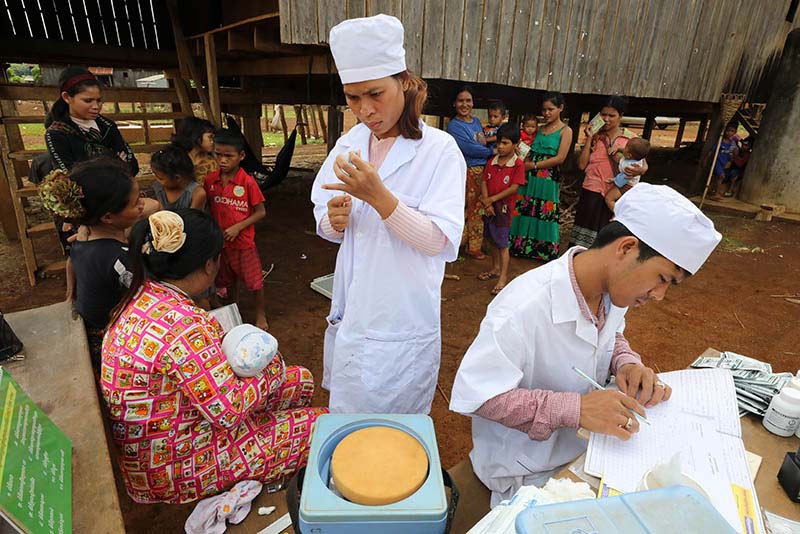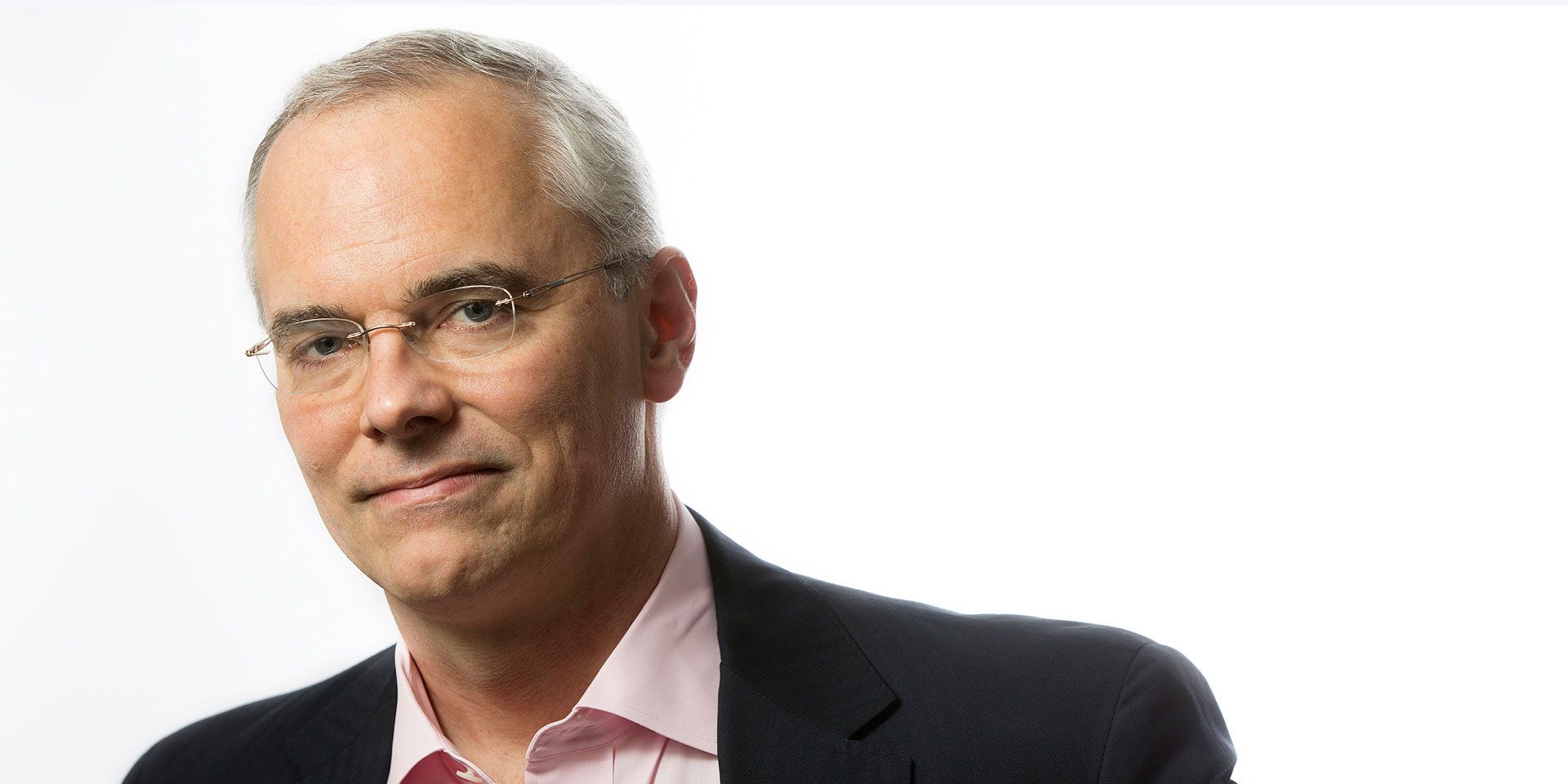By Christina Nelson
Richard Hatchett is the CEO of the Coalition for Epidemic Preparedness Innovations (CEPI), a global partnership of public, private, and civil society organizations that works to accelerate the development of vaccines against emerging infectious diseases. Over the course of the pandemic, CEPI has invested $1.2 billion in a portfolio of 11 COVID-19 vaccine candidates, including three that have been proven effective so far.
CEPI is also co-leading COVAX, a mechanism to ensure that all participating countries receive vaccines as quickly and equitably as possible, regardless of income level. In an interview conducted in early February, Hatchett discussed the state of vaccine access in developing countries and how the private sector can help speed up vaccine delivery. This interview has been edited for length and clarity.
Q: COVID-19 vaccinations are taking place primarily in high-income countries right now. What does the picture look like for COVID-19 vaccine access in low- and middle-income countries?
A: We are about two months into vaccination programs in high-income countries. They started at the beginning of December in the United Kingdom, and now are in dozens of countries, the vast majority of which are high-income countries, a few upper-middle-income countries. Very limited doses, if any, have reached low- or lower-middle income countries. Over 100 million doses have been distributed at this point. Approximately 75 percent of those have been distributed to just 10 countries. This month, COVAX will begin to roll out vaccines globally. By the middle of the year, we will be close to 600 million doses of vaccine, based on current estimates from manufacturers, and over 2 billion doses by the end of the year, at least 1.3 billion of which will be reserved for 92 low- and middle-income countries.
Q: When can people in low- or middle-income countries expect to get a vaccine?
A: Based on COVAX’s current agreements and partnerships, we estimate that there should be enough vaccine for about 27 percent of the population of the lower-income countries receiving vaccine through the COVAX Facility. Many—the United States, Canada, the United Kingdom, the European Union—have secured more vaccine then they are likely to need. They placed multiple orders for vaccine when we didn't know whether the vaccines were going to be successful, and we're in a very fortunate situation where many of the vaccines are successful. If those countries can release vaccine and have it distributed through the COVAX system, we may be able to get that percentage even higher by the end of the year.

A midwife vaccinates children in Kamen Thom Village, Cambodia (2019). Photo by: Dominic Chavez/World Bank
Q: A lot of these vaccines have different characteristics, particularly in terms of distribution requirements. What recent vaccine developments are going to make a difference in developing countries?
A: The logistical requirements for the vaccine is an important question to consider, particularly in low-resource settings and countries where there may not be routine adult vaccination programs. Every country in the world has a routine childhood immunization program, but not all countries are well situated to deliver vaccines to adults, and particularly to the elderly and the most vulnerable. Vaccines that have complicated administration requirements, such as mixing of multiple components in the clinic, storage at -70 or -20 degrees Celsius, and multiple doses, all present challenges.
There have been some recent promising developments related to vaccines that have ultra-cold chain requirements but may be difficult to use in many low-resource settings outside of capital cities or outside of large medical centers. In many countries, there are vaccines that are coming along that can be stored in refrigerators at 2-to-8 degrees Celsius, and a one-dose vaccine has just been shown to be safe and effective. That's a terrific advance.
Q: Are CEPI or COVAX working with national governments to ramp up mass vaccination programs and assist with potential supply chain and distribution issues?
A: COVAX, working through the World Health Organization, Gavi, the Vaccine Alliance, and UNICEF, has developed a vaccine readiness assessment tool in partnership with the World Bank. The tool helps countries understand where they may have gaps. Those institutions are also thinking about how we can provide support to help those countries overcome any shortfalls or gaps that they may currently have.
Q: What do you see as a path forward to ensure that vaccine access is as equitable as possible?
A: The main obstacle to equity is scarcity, and the fastest way to overcome these inequities is to increase the total volume of vaccine that is available. You can do that partially by increasing manufacturing capacity for successful vaccines, but that takes a lot of time. You can also do it by increasing the number of vaccines that have been tested and demonstrated to be safe and effective. At this point, we're very fortunate in that we have an increasing number of vaccine candidates that have been demonstrated to be safe and effective, and we need to ensure that they are all produced in a high-quality fashion.
We understand the needs of elected officials (in developed countries) to take care of the populations that elected them. But we want to convey to leaders of countries with much more vaccine than the rest of the world that you cannot end the pandemic and end the disruption and the damage that it is causing to the global economy simply by vaccinating your own population.
Q: What are the arguments for promoting the equitable distribution of the COVID-19 vaccine globally?
A: There’s an ethical argument that all people who are at highest risk should have the vaccine first.
There's an argument for enlightened self-interest, which is that we need to end the pandemic globally so that we can restore the global economy and begin to return to the life that we had before the pandemic. There was a recent study that came out of the International Chamber of Commerce that looked at the economic impacts of the pandemic. It found that the pandemic was going to cause in excess of $9 trillion in damage to the global economy in 2021 alone. Even if the high-income countries vaccinated their entire populations, over 53 percent of the global economic costs of the pandemic would be borne by the advanced economies.
The final argument is that as long as the virus is circulating globally at high levels, it will have opportunities to evolve in ways that make it more efficient in transmission and allow it to evade countermeasures. Even if a country protects its own population with a vaccine, if a new variant of the virus comes along that a vaccine does not protect against, then that effort to vaccinate your own population has gone to waste.
Q: What is the private sector’s role in speeding up the delivery of the vaccine and what can private companies do to prepare for vaccine delivery?
A: I think what we are undertaking is the largest vaccination effort ever attempted in the history of the world, and we have to recognize the massive challenge that is in front of us. The role of the pharmaceutical companies that are developing the vaccines is very clear. They also have to make investments in manufacturing, to increase the efficiency of the manufacturing process and the speed at which they can pump vaccine out. There are also the upstream private sector partners who develop critical materials that are required to manufacture the vaccines, and those partners have been engaged. They're straining to meet demand. The logistics partners—the UPSes, FedExes, and DHLs of the world—are going to have a massive role to play in the distribution of vaccine.
At some point, it is possible that private sector companies may be able, through their occupational health programs, to administer vaccine in many countries. That could take a significant load off public sector institutions that are going to be stretched to deliver vaccine as quickly as they can. In the United States, decisions have now been made to distribute vaccine through retail pharmacies, and that's another example of an important sector stepping up and [fulfilling] their role.
There have been a lot of people who have publicly expressed concern about the speed at which vaccine had been developed. It’s important to encourage everyone to be vaccinated, and I think that private sector partners and employers can also play an important role in amplifying that message.
Q: What do you expect the pandemic to look like at the end of 2021?
A: The goal through 2020 was to be able to end the acute phase of the pandemic by the end of 2021 by ensuring that health-care workers and those at greatest risk of severe illness or death had been vaccinated by the end of the year.
I think the wrench that has been thrown into that plan relates to the emergence of these new variants and our uncertainty as to how they're going to behave. We know that they spread more rapidly than the virus that we were fighting throughout most of 2020. We now have tools and vaccines that we can get out to people. The problem is that at least some of the variants probably will evade—at least partially—the effect of the vaccines.
In the interim, the most important thing we can do is to reduce global transmission of COVID-19. No one should think that vaccines are a panacea. We will continue to need good diagnostics, surveillance, and better therapeutics. We need to follow the public health interventions, which we're all exhausted by, and use them in a targeted way to keep transmission down. If we can do that, I know that we will end 2021 in a better place than we are right now.
Published in February 2021
